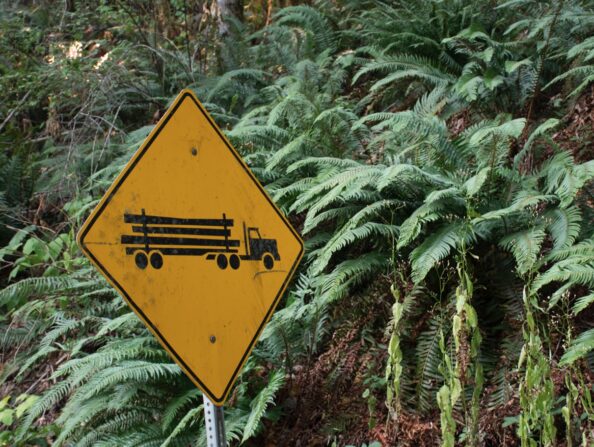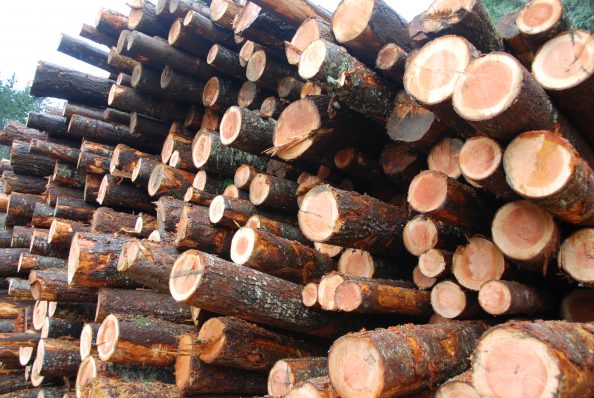The extremes between the hot summers and bone-chilling winters can have an affect on the Okanagan and its ecosystems. Over the last several years, B.C. filmmakers Nova Ami and Velcrow Ripper have explored and created a documentary titled Incandescence, which is an inside look at how wildfires impact the ecosystem and how communities that have both forest and civilization can protect themselves. One of the factors related in the documentary is the extreme differences between dry and wet conditions. This is called hydroclimate whiplash. Ami and Ripper talk with Indigenous elders, first responders, and local residents, getting their reaction to the ever-changing ecosystem.
 The province’s review of B.C. Timber Sales (BCTS) is based on a false contention the industry is running out of wood because of allowable annual cut reductions, says the Valhalla Wilderness Society (VWS). VWS said the Ministry’s review of BCTS to ensure the province’s forestry sector “is continually evolving to overcome challenges and create a guideline for a stronger, more resilient future” is barking up the wrong tree. VWS’ Anne Sherrod said the province’s intention to protect more old-growth and reform forestry in a more environmentally beneficial manner lasted only until the forest industry applied enough pressure. …Logging companies were already moving their mills and jobs out of B.C. long before U.S. President Donald Trump was elected, said Sherrod, and claims the province continues to reduce the allowable annual cut, or isn’t signing permits fast enough and environmentalists are depriving them of wood, are just excuses.
The province’s review of B.C. Timber Sales (BCTS) is based on a false contention the industry is running out of wood because of allowable annual cut reductions, says the Valhalla Wilderness Society (VWS). VWS said the Ministry’s review of BCTS to ensure the province’s forestry sector “is continually evolving to overcome challenges and create a guideline for a stronger, more resilient future” is barking up the wrong tree. VWS’ Anne Sherrod said the province’s intention to protect more old-growth and reform forestry in a more environmentally beneficial manner lasted only until the forest industry applied enough pressure. …Logging companies were already moving their mills and jobs out of B.C. long before U.S. President Donald Trump was elected, said Sherrod, and claims the province continues to reduce the allowable annual cut, or isn’t signing permits fast enough and environmentalists are depriving them of wood, are just excuses. VICTORIA – Workers and communities throughout B.C. are benefiting from Forest Enhancement Society of BC (FESBC) supported projects that reduce wildfire risk and increase fibre supply, keeping local mills and energy plants running in the face of U.S. tariff threats and unjustified softwood lumber duties. With $28 million from the Province, FESBC is supporting 43 new and expanded fibre-recovery projects and 31 new and expanded wildfire-mitigation projects. “In tough times, I want workers in our forest sector to know I’ve got their back,” said Ravi Parmar, Minister of Forests. “Whether it’s better utilizing existing sources of fibre or helping protect communities from wildfire, the projects are supporting workers and companies as they develop new and innovative forest practices.” Projects are taking place in all eight of the Province’s natural resource regions, helping create jobs, reducing wildfire risk and supporting B.C.’s pulp and biomass sector. They will be complete by the end of March 2025, in advance of wildfire season.
VICTORIA – Workers and communities throughout B.C. are benefiting from Forest Enhancement Society of BC (FESBC) supported projects that reduce wildfire risk and increase fibre supply, keeping local mills and energy plants running in the face of U.S. tariff threats and unjustified softwood lumber duties. With $28 million from the Province, FESBC is supporting 43 new and expanded fibre-recovery projects and 31 new and expanded wildfire-mitigation projects. “In tough times, I want workers in our forest sector to know I’ve got their back,” said Ravi Parmar, Minister of Forests. “Whether it’s better utilizing existing sources of fibre or helping protect communities from wildfire, the projects are supporting workers and companies as they develop new and innovative forest practices.” Projects are taking place in all eight of the Province’s natural resource regions, helping create jobs, reducing wildfire risk and supporting B.C.’s pulp and biomass sector. They will be complete by the end of March 2025, in advance of wildfire season.
 RAPID CITY, S.D. – South Dakota Gov. Larry Rhoden says during one of his several meetings with USDA Secretary Brooke Rollins last week, he and Wyoming Gov. Mark Gordon had an extensive conversation about the Black Hills and timber contracts. “Just what’s at stake for the Black Hills as far as wildland fires, dangers, the insect infestations and just our timber industry and the future of that in general,” said Rhoden. Rhoden continued on saying he was “very encouraged by the conversation we had with her, that we’re going to take steps to rectify that.” Rhoden says the current amount of timber harvested is far below what is allowed. “Not even close, and under the Biden administration we were just banging our heads against the wall. We would provide the facts and the data, and they were ignored,” the governor explained.
RAPID CITY, S.D. – South Dakota Gov. Larry Rhoden says during one of his several meetings with USDA Secretary Brooke Rollins last week, he and Wyoming Gov. Mark Gordon had an extensive conversation about the Black Hills and timber contracts. “Just what’s at stake for the Black Hills as far as wildland fires, dangers, the insect infestations and just our timber industry and the future of that in general,” said Rhoden. Rhoden continued on saying he was “very encouraged by the conversation we had with her, that we’re going to take steps to rectify that.” Rhoden says the current amount of timber harvested is far below what is allowed. “Not even close, and under the Biden administration we were just banging our heads against the wall. We would provide the facts and the data, and they were ignored,” the governor explained.